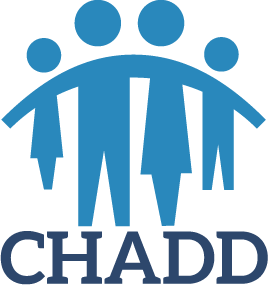 Back to school is normally a time of excitement with a splash of worry thrown in. But this year, with the shift from remote learning to in-person or hybrid instruction, it seems that there’s more worry with just a splash of excitement. For neurodiverse kids who found online learning more helpful in certain ways, this could be even less exciting. Returning to School with ADHD isn’t easy. How can you assist your child or teen with ADHD reduce their back to school worries and make a smooth transition?
Back to school is normally a time of excitement with a splash of worry thrown in. But this year, with the shift from remote learning to in-person or hybrid instruction, it seems that there’s more worry with just a splash of excitement. For neurodiverse kids who found online learning more helpful in certain ways, this could be even less exciting. Returning to School with ADHD isn’t easy. How can you assist your child or teen with ADHD reduce their back to school worries and make a smooth transition?
Start by discussing and accepting their feelings and your own worries.
Everybody feels uncertain and uncomfortable right now. Change, in the midst of COVID numbers rising again and the confusion about getting vaccinated, make us all feel insecure. How do we reintegrate as a society? Is it safe to gather? What advice do we follow? Following the CDC guidelines seems to differ among various people. You have to follow your own guidelines about what makes you feel safe while understanding that kids need to return to some degree of normalcy.

During the pandemic, we’ve been separated from so many aspects of our typical lives. As parents, you’ve been stressed thin with juggling work, school supervision and the regular demands of family life. In this strange, extended period, kids of all ages, whose social and emotional development highly depends on social interactions, have missed having close peer connections and struggled navigating the complexities of online relationships for more than a year.
Kids with ADHD who’ve been doing hybrid or remote learning have also been able to move around physically, follow impulses and refrain from practicing the emotional regulation that’s required of them in the school building. These adjustments will change once they are in classrooms.
Preparing anxious kids for the returning to school with ADHD not only relies on reviewing the various alterations to the school environment but also practicing necessary social skills, COVID hygiene and academic adjustments. Follow these steps to promote confidence, strategies and resilience in your student.
Tips to help anxious kids transition to returning to school with ADHD and confidence:
1. Manage your own concerns first.
Kids have incredible radar. They easily pick up when their parents are stressed or anxious and it increases their own distress, conscious or unconscious. The first step in decreasing the anxiety your child or teen is feeling is to lower your own.
Take a few minutes and discuss your concerns about returning to school with ADHD, anxiety and COVID concerns with your partner, a friend, extended family member or counselor. Write these down and then strategize responses or to-do action items to each one by creating an “Anxiety Decelerator Plan.”
This ADP will help you feel like you have some control. For instance, if your child needs more support than they received in the spring, one of your action items should be to contact the school adjustment or guidance counselor and set up a meeting.
2. Identify their worries.
We can’t assist kids in turning down the frequency or intensity of their anxiety unless we know what’s causing it. Worried thinking and environmental triggers set children and teens off and then they fall down the rabbit hole. We want to stop this tumble.
During your weekly or twice a week check-in meetings (these are a must), explore what might be uncomfortable or uncertain about in-person/hybrid learning. Write these down. Pick one fear together to address first and when its volume is lower, you can pick another. Remember, people can really only change one thing at a time.
3. Consider past success.
 When kids are anxious, they experience amnesia about times in the past when they overcame obstacles. Talk about a situation ortwo from the past when there was a challenge that they dealt with successfully. What happened? What did they rely on inside of themselves to do this? Did anyone assist them? Write down their responses: they are critical pieces of your youngster’s resilience toolkit that they need for bouncing back from anxiety.
When kids are anxious, they experience amnesia about times in the past when they overcame obstacles. Talk about a situation ortwo from the past when there was a challenge that they dealt with successfully. What happened? What did they rely on inside of themselves to do this? Did anyone assist them? Write down their responses: they are critical pieces of your youngster’s resilience toolkit that they need for bouncing back from anxiety.
Link some of these tools to the worry that you both have agreed to work on. Cue them to use this tool and check in about how it’s going at your meetings. Brainstorm what you can do to assist them that works for both of you (especially for tweens and teens).
4. Avoid reassurance, and rely on acknowledgment instead.
Anxiety loves reassurance. But while reassurance brings about a short-term relief, it increases long-term anxiety because it doesn’t teach kids the skills they need to do this for themselves. What parents need to do is acknowledge the fear and validate their concerns.
Say something like, “Yes, of course you are worried about returning to school. It’s a big adjustment. What did we do when we needed to make a change last year? How can we use those strategies for this transition?” Making these connections for kids fosters their capabilities for self-reassurance and resilience.
5. Create a new normal.
Nothing is the same, and even though we desire our old normal, it’s not here. Welcome and adapt to new rhythms instead of fighting them. Identify available resources that you have now and didn’t before: safe social interactions, outside exercise, educational tutors and better intervention. This shift in your focus will aid your kids with ADHD who naturally wrestle with flexibility pivot more successfully.

Read more blog posts:
- ADHD Teens and Remote Learning: 5 Tips for Learning Success
- How to Transform Anxiety in Kids with ADHD to Excitement
- Personal Project Planners for ADHD Minds: Start managing tasks, time and ideas with this creative tool!
Watch on Dr. Saline’s YouTube Channel:
- How to Help Your Children Transition Back to School Smoothly (WWLP 22 News Mass Appeal interviews Dr. Saline)
- ADHD Students: Tips for Transitioning Back to In-person Learning (ADDitude ADHD Parenting Q&A with Dr. Saline)
- Help Your Kid Overcome School Anxiety (Operation Parent Webinar with Dr. Saline)
Deeper Dive: https://drsharonsaline.com/product/online-learning-tips-for-parents-bundle/ https://drsharonsaline.com/product/home-seminar/








 When you are triggered by your daughter, it’s really difficult to show up as the parent you want to be. Figure out the internal signals that you are being set off and
When you are triggered by your daughter, it’s really difficult to show up as the parent you want to be. Figure out the internal signals that you are being set off and  Figure out together where, when and how homework or hybrid school will occur.
Figure out together where, when and how homework or hybrid school will occur.

 Many teens with ADHD procrastinate and appear to lack self-discipline. Why? Sometimes they have anxiety around how to approach the task, how to complete the task or
Many teens with ADHD procrastinate and appear to lack self-discipline. Why? Sometimes they have anxiety around how to approach the task, how to complete the task or 




 How ADHD Is Diagnosed. There’s no single test that can determine if you or your child has ADHD, but we’ll help you get the answers you’re seeking.
How ADHD Is Diagnosed. There’s no single test that can determine if you or your child has ADHD, but we’ll help you get the answers you’re seeking. 





